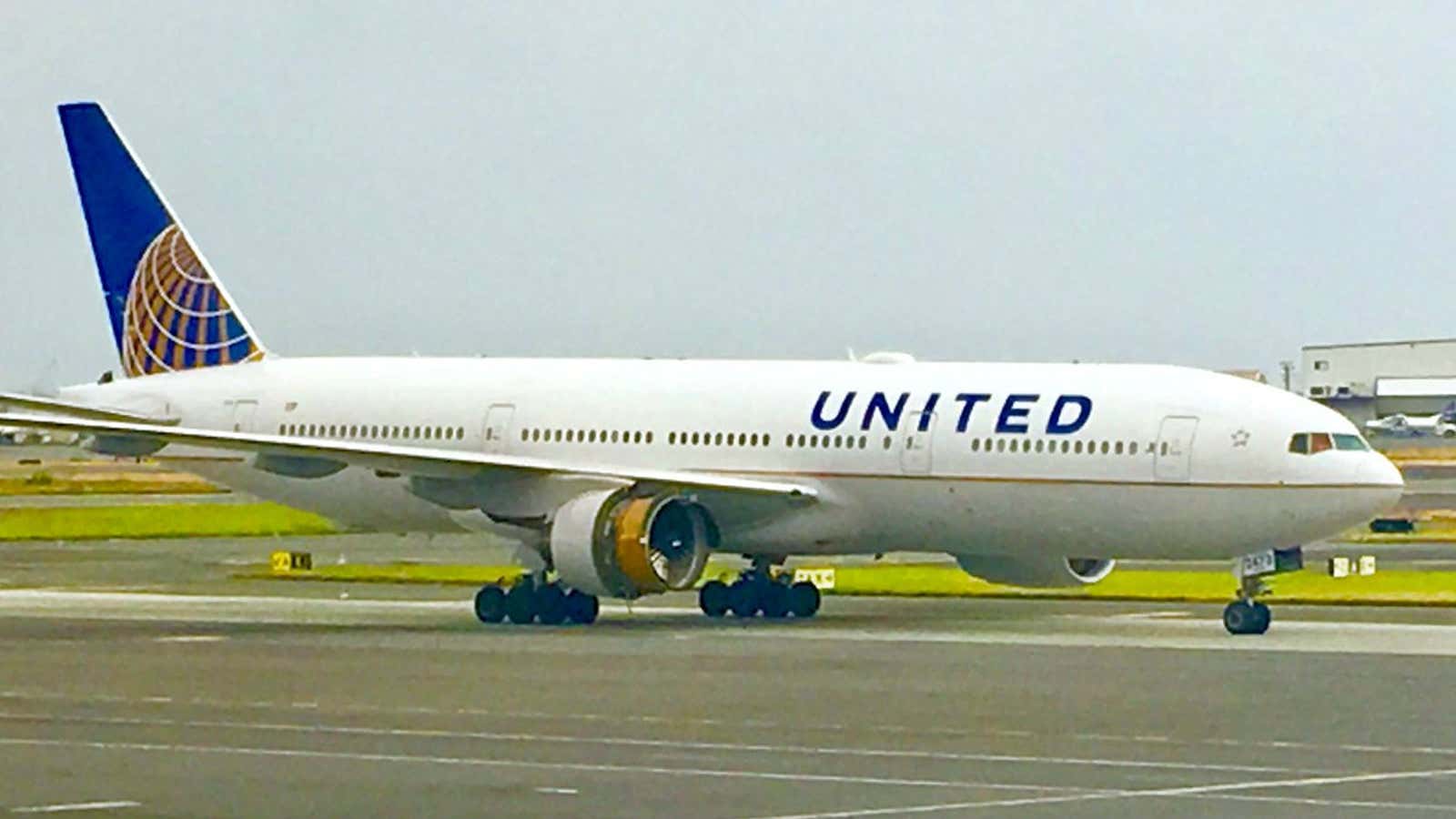If you have even a moderate amount of anxiety about flying, the thought of being on United Airlines flight 1175 from San Francisco to Honolulu yesterday is, in a word, paralyzing.
The Boeing 777-222 had to make an emergency landing after the engine cowling ripped off less than an hour before its scheduled landing. Thankfully, the twin-engine aircraft is able to fly on a single engine (although it’s unlikely many people would know that), and thus the plane was able to make an emergency landing. All passengers de-planed safely.
Can’t imagine what it must’ve been like on board? Well, you don’t have to. Several passengers documented the incident on social media with a mixture of humor and terror and accidentally profound brevity. Naturally, documentation of the heavily shaking and damaged plane—as well as those tracking the situation on the ground—had the makings of a Twitter Moment.
One passenger, Google engineer Erik Haddad, had a particularly harrowing view of the problem and proceeded to post a video (which was widely used by news outlets) and to make jokes and puns on Twitter amidst the terror.
Tweeting or Snapping in a life or death moment is of course not unique to yesterday’s United flight. After the false missile alarm was issued in Hawaii, many people, reasonably thinking the end was nigh, shared sentiments on social media ranging from fear and love for family members to jokes about golf. It’s fair that some might feel that the last thing they’d be doing in their final moments would be typing 280 character messages into their phone, but something about the impulse is heartening—and telling about who we are as human beings.
The background noise of babies crying and cabin bells sounding in Haddad’s video remind us of just how fragile life is. The eruption of applause and cheers when the plane safely hits the tarmac—amidst chants of “brace, brace, brace”—reminds us of how much joy there is to be found in life, especially in relation to its most harrowing moments.
Haddad and others having the brave and clear-headed impulse to document the situation says more about humans than it does about smartphones or social media. In moments where we contend directly with life or death, we still seek connection rather than retreat.
